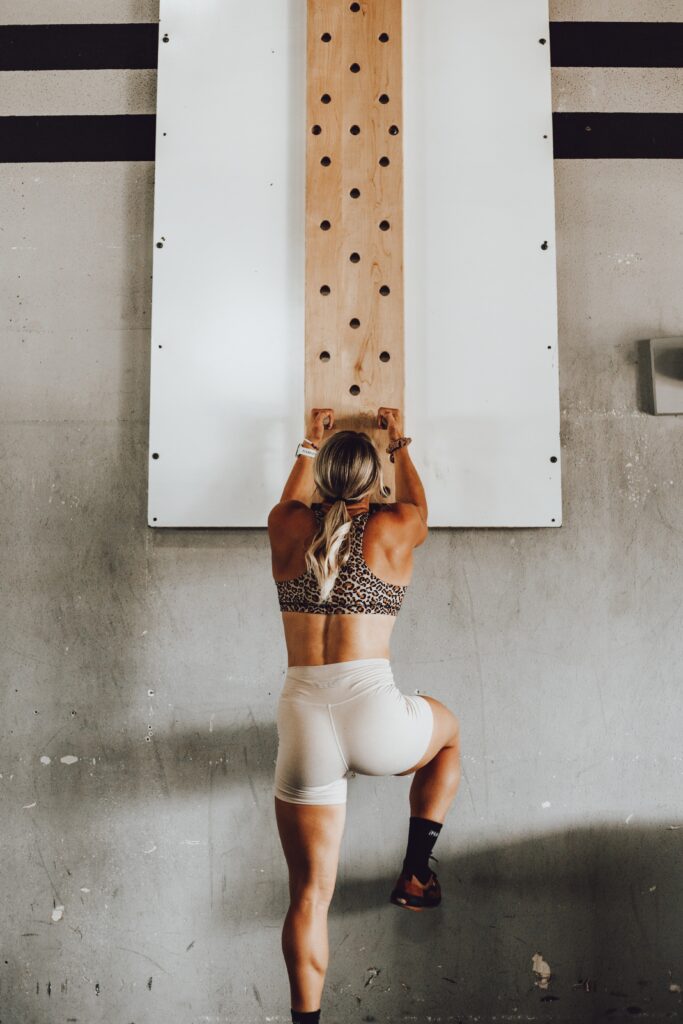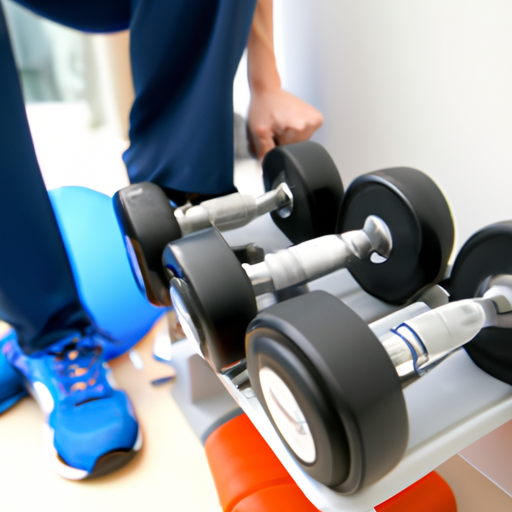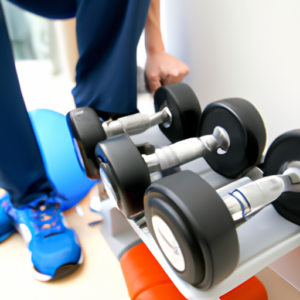Are you tired of spending money on expensive gym memberships or struggling to find the motivation to go to the gym? Look no further! “How To Build A Home Gym On A Budget” is the ultimate guide that will show you step-by-step how to create your very own gym at home, without breaking the bank. Whether you’re a fitness enthusiast or just starting your fitness journey, this comprehensive guide will teach you everything you need to know about selecting the right equipment, creating an effective workout space, and maximizing your budget. Say goodbye to crowded gyms and hello to the convenience of working out in the comfort of your own home – all while saving money in the process. Get ready to transform your fitness routine with “How To Build A Home Gym On A Budget”!

This image is property of images.unsplash.com.
Understanding Your Fitness Goals
When it comes to building a home gym, it’s important to start by understanding your fitness goals. What are you looking to achieve with your workouts? Are you aiming to lose weight, build muscle, increase flexibility, or improve your overall health and well-being? By identifying your fitness needs, you can create a workout environment that caters to your specific goals.
Identifying Your Fitness Needs
Take the time to assess your current fitness level and identify areas where you would like to see improvement. Maybe you want to focus on cardiovascular exercise to improve your endurance, or perhaps strength training is your priority. Understanding your fitness needs will help you determine the types of equipment and exercises that will be most beneficial for you.
Prioritizing Your Fitness Goals
Once you have identified your fitness needs, it’s essential to prioritize your goals. Determine which areas you would like to prioritize and focus on first. By setting clear priorities, you can allocate your resources, both time and money, more effectively to achieve the desired results.
Determining Your Budget
When building a home gym, determining your budget is a crucial step. It’s essential to have a clear idea of how much you are willing and able to spend on your fitness journey. By setting a budget, you can make informed decisions about equipment purchases and ensure that you stay within your financial limitations.
Identifying Your Financial Limitations
Take a close look at your finances and identify any limitations or constraints that may impact your home gym budget. Consider factors such as your monthly income, existing expenses, and any other financial obligations you may have. By understanding your financial limitations, you can set realistic expectations and make wise financial decisions.
Setting Up a Gym Finance Plan
If your budget is tight, don’t worry! There are ways to build a home gym on a budget. One approach is to create a gym finance plan. Consider spreading out your purchases over time, allowing you to gradually build your gym while staying within your financial means. Prioritize the most essential equipment first and add to your collection as your budget allows.
Choosing The Right Space
Once you have your fitness goals and budget in mind, it’s time to think about the space you have available for your home gym. Choosing the right space is crucial for creating a comfortable and effective workout environment.
Considering Available Indoor Spaces
Look around your home for available indoor spaces that could be converted into a home gym. It could be a spare bedroom, a basement, or even a corner of your living room. Evaluate the size and layout of each space to determine if it can accommodate the equipment and activities you have in mind for your home gym.

This image is property of images.unsplash.com.
Exploring Outdoor Gym Possibilities
If you have limited indoor space or prefer to workout outside, consider exploring outdoor gym possibilities. Setting up an outdoor gym can be a budget-friendly option, as you can take advantage of natural elements like fresh air and sunlight. Look for a suitable outdoor area where you have enough space to perform exercises and store equipment safely.
Planning Your Home Gym Layout
Once you have chosen the right space for your home gym, it’s time to start planning the layout. A well-thought-out layout will ensure that you can maximize the use of your space and create a functional and inviting workout area.
Creating a Gym Floorplan
Begin by creating a gym floorplan that outlines the placement of your equipment and other workout essentials. Consider factors such as traffic flow, accessibility, and the size and shape of your equipment. Aim for an open and spacious layout that allows for safe and comfortable movement during your workouts.
Understanding Equipment Spacing Requirements
It’s important to understand the spacing requirements of your equipment to ensure proper usage and safety. Different machines and exercise tools may require specific spacing for optimal performance and to prevent accidents. Refer to the equipment manuals or consult with professionals to determine the appropriate spacing for each piece of equipment.

This image is property of images.unsplash.com.
Choosing Essential Equipment
Now comes the exciting part – choosing the essential equipment for your home gym. Consider your fitness goals, available space, and budget as you make your selections. By focusing on the essentials, you can create a well-rounded workout routine without breaking the bank.
Determining Essential Equipment Based on Fitness Goals
Refer back to your fitness goals and prioritize the equipment that will help you achieve those goals most effectively. For example, if strength training is your focus, consider investing in dumbbells, resistance bands, or a weight bench. If cardiovascular exercise is your priority, a treadmill, stationary bike, or rowing machine might be essential.
Exploring Various Equipment Price Ranges
When it comes to purchasing gym equipment, there are options available for every budget. Explore various price ranges to find equipment that fits within your budget without sacrificing quality. Consider shopping around, comparing prices, and reading reviews to ensure you are getting the best value for your money.
Purchasing Budget-Friendly Gym Equipment
Building a home gym on a budget doesn’t mean you have to compromise on the quality of your equipment. There are several ways to find affordable gym equipment, allowing you to create a well-equipped home gym without breaking the bank.

Finding Affordable Gym Equipment Retailers
Look for retailers that specialize in providing affordable gym equipment. These retailers often offer discounted prices, package deals, or refurbished equipment to help you save money. Research local stores or check online for deals and promotions.
Shopping in Secondhand Stores
Consider shopping in secondhand stores for gym equipment. Many people sell or donate their used exercise equipment, which can be a great way to find quality items at a fraction of the original price. Just be sure to thoroughly inspect any used equipment before purchasing to ensure it is in good working condition.
Checking Out Online Marketplaces
Online marketplaces are another excellent resource for finding budget-friendly gym equipment. Websites such as Craigslist or Facebook Marketplace often have listings for used fitness equipment in your local area. These platforms allow you to connect directly with sellers, negotiate prices, and potentially find great deals.
Installing Your Gym Equipment
Once you have your gym equipment, it’s time to set up your home gym. Proper installation is crucial for both the functionality and safety of your equipment.

Setting Up Your Home Gym
Follow the manufacturer’s instructions or seek professional guidance when setting up your gym equipment. Place each piece in the designated area according to your gym floorplan. Ensure that the equipment is stable, level, and secure to prevent accidents or damage during use.
Ensuring Safe Equipment Installation
Safety should be a top priority when installing your gym equipment. Double-check that all bolts, screws, and other fasteners are tight and secure. Take note of weight limits and usage instructions to prevent overloading or improper use of the equipment. If you are unsure about any aspect of the installation, consult with a professional to ensure everything is set up correctly.
Incorporate DIY Gym Equipment
If you’re feeling creative and want to save more money, consider incorporating DIY gym equipment into your home gym. Making your own equipment can be a fun and cost-effective alternative to purchasing ready-made pieces.
Understanding How to Create Your Own Gym Equipment
There are numerous resources available online that provide instructions and tutorials on creating your own gym equipment. From homemade dumbbells to improvised kettlebells, the possibilities are endless. However, it is crucial to ensure that your DIY equipment is safe and sturdy before using it for workouts.
Sourcing Materials for DIY Gym Equipment
When creating your own gym equipment, sourcing the right materials is essential. Look for items around your home or visit local hardware stores to find suitable materials for your DIY projects. Make sure to select materials that are durable and can withstand the stress and strain of your workouts.
Maintaining Your Home Gym
Once your home gym is set up, it’s important to establish a maintenance routine to keep it in optimal condition. Regular maintenance will help prolong the life of your equipment and ensure a safe workout environment.
Designing an Equipment Maintenance Routine
Create a schedule for regular equipment maintenance, including cleaning, lubrication, and inspection. Wipe down your equipment after each use to remove sweat and bacteria. Follow the manufacturer’s guidelines for lubricating moving parts to prevent excessive wear and tear. Regularly inspect your equipment for any signs of damage or malfunction, and address any issues promptly.
Considering the Cost of Ongoing Gym Maintenance
While building a home gym can be a cost-effective option in the long run, it’s important to consider the ongoing cost of maintenance. Factor in expenses such as equipment repairs, replacement parts, and any necessary upgrades. By considering these costs from the beginning, you can budget and plan accordingly.
Alternatives to Traditional Gym Equipment
If your budget is extremely limited or you prefer a more versatile workout routine, consider exploring alternatives to traditional gym equipment. You’d be surprised at the wide range of exercises you can perform using your body weight or everyday household items.
Exploring Bodyweight Exercises
Bodyweight exercises are a fantastic alternative to traditional gym equipment. Exercises such as push-ups, squats, lunges, and planks can effectively target various muscle groups without the need for additional weights or machines. Incorporate bodyweight exercises into your workout routine to build strength, improve endurance, and increase flexibility.
Utilizing Household Items as Gym Equipment
Look around your home for everyday household items that can be repurposed as gym equipment. For example, a sturdy chair can be used for step-ups or triceps dips, and filled water bottles can double as dumbbells. Get creative and think outside the box to find alternative ways to challenge your muscles and get a great workout without spending a fortune.
Building a home gym on a budget is an achievable goal. By understanding your fitness goals, identifying your budget, and carefully planning your space and equipment choices, you can create a functional and effective home gym that meets your needs. Don’t be afraid to get creative and explore alternative options to traditional gym equipment. With dedication and resourcefulness, you can achieve your fitness goals without breaking the bank.

